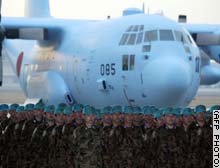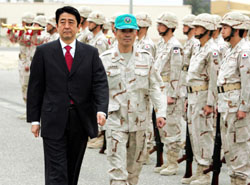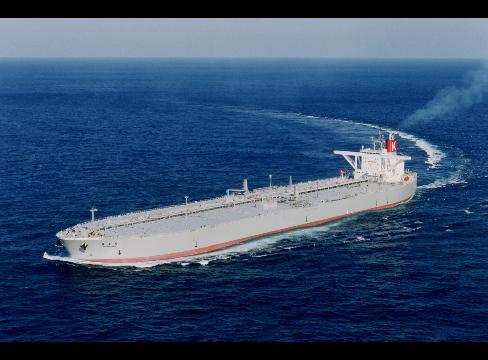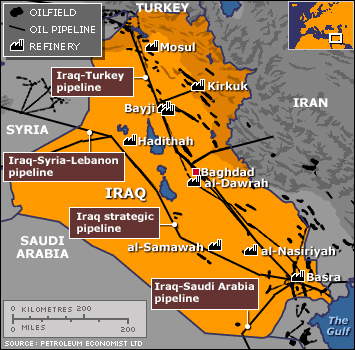Michael Penn
In March 2007 the Japanese Foreign Ministry began speaking of a “long-term and strategic partnership” between Japan and Iraq. The terminology was new: Japan had previously described its policy in post-Saddam Iraq in terms of “reconstruction activities” but not as a “strategic partnership.” What accounts for this shift in language? What does the new policy entail? What does it overlook?
The Post-Samawa Dilemma
On July 19, 2006, the final elements of the Ground Self-Defense Forces (GSDF) mission rolled across the border between Iraq and Kuwait. The 2 1/2 year mission in Samawa ended without the deaths of any GSDF member on Iraqi soil — although it was indirectly related to the deaths of several Japanese civilians. As this watershed event was taking place, the future policies of the Japanese government remained shrouded in uncertainty. Was this the effective end of Japanese support to the post-Saddam Iraqi government? Or was it simply the beginning of a new phase?
In fact, Japanese policymakers had been thinking about this issue for many months. They had been extremely concerned about the reaction in Washington as they withdrew their “boots on the ground.” They definitely did not want to give the impression that the GSDF withdrawal was an abandonment of Iraq in any way. Their key concern was to find a way to demonstrate their renewed commitment to the Baghdad regime.
Tokyo hoped to do this primarily through a generous policy of government-to-government financial aid. Among U.S. allies, Japan’s initial pledge of U.S.$5 billion in aid to Iraq far outstripped that of any other country in the coalition other than the United States. U.S.$1.5 billion of Japan’s aid package to Baghdad had already been distributed. The other U.S.$3.5 billion was in the form of government loans to be provided on special terms. The complete list of projects within Iraq that would receive these Japanese loans was yet to be determined, but it was announced that this would be done by around the end of 2007.
The generous Japanese financial aid was not seen as sufficient by either U.S. officials or even the conservative Liberal Democratic Party (LDP) leadership, however. Japan had been harshly criticized for “checkbook diplomacy” during the Persian Gulf War of 1991, and the GSDF Samawa mission itself had been sent primarily to blunt such criticisms. Aid was fine, but Washington demanded that Japan keep a toehold inside Iraq in a more physical manner as well.
On January 17, 2006, then-U.S. Secretary of Defense Donald Rumsfeld sounded out then-Defense Agency Director-General Nukaga Fukushiro on an American proposal that the GSDF participate in “security operations” within Iraq and also that it play a direct role in training Iraqi military forces. American requests for a military contribution by the Japanese forces in Samawa had begun as early as October 2005. Nukaga made clear that he felt such a role would fall outside of his interpretation of the pacifist Article Nine of the Japanese Constitution and would not be accepted in Tokyo. Nukaga did suggest, however, that Japanese leaders were still debating how they could contribute to “international peace and cooperation activities” through the framework of the United Nations. Rumsfeld responded with comments to the effect that “the world’s second-largest economy should contribute to global stability at a time when international organizations are weak.”
By February Tokyo had received a direct request from Washington to send senior GSDF officers to Basra to aid in “provincial reconstruction activities.” This sparked concern and debate among Japanese leaders as they were considering plans for the GSDF withdrawal from Samawa. They refrained from making any commitments to the U.S. government.
In March, Washington raised the stakes. During a trilateral meeting held in Sydney between Secretary of State Condoleezza Rice, then-Foreign Minister Aso Taro, and Australian Foreign Minister Alexander Downer, Rice reportedly told Aso that it was “essential” that Japan send either military officers or civilians to join a “reconstruction team” on the ground inside Iraq. Again the Japanese side demurred.
This was fortunate for them: in mid-May Basra — which American officials had been describing as safe and stable — suddenly exploded into violence between rival political factions. A British military helicopter was shot down at that time. The effect of the Basra violence was to reduce American demands on Tokyo to a certain degree.
In the end, Tokyo successfully resisted Bush Administration pressure to take a direct security role inside Iraq, but they remained highly sensitive to of the need to show support for the American project in ways that were less risky.
The Under-the-Radar ASDF Mission
The primary means by which Japanese leaders tried to satisfy Washington in this regard was through an expansion and renewed emphasis on the Air Self-Defense Forces (ASDF) transport mission in Kuwait and Iraq.
The ASDF mission was, and still is, shrouded in mystery. Mention of it appears only infrequently in the press, and it is likely that much of the Japanese public is completely unaware that it is proceeding. Unlike the GSDF mission in Samawa, the ASDF transport mission has been accompanied by no public fanfare. For the most part, it has been under the radar.
What we can surmise from the sparse information that has appeared are the following facts: The mission, or at least preparations for it, seems to have begun in the fall of 2003 at about the same time as the GSDF deployment to Samawa. The main operations are conducted from Ali al-Salim Air Base in Kuwait, and involve about two hundred men and three C-130 transport planes. An additional ten ASDF officers serve at the U.S. Air Force Central Command, which is apparently in Qatar. It is not clear what the ASDF planes are actually transporting, but they have denied rumors that their cargoes include ammunition for U.S. forces.
Significant Japanese newspaper reports on the ASDF mission did not begin appearing until April 2006 when the Asahi Shinbun ran a five-part series that had clearly gained official cooperation. A year later, then-Prime Minister Abe Shinzo allowed himself to be photographed inspecting the troops during his April-May 2007 tour of the Persian Gulf.
The ASDF mission was originally established, it seems, simply to support the GSDF mission in Samawa. About a year later, however, finding that only about two or three flights were needed each week for this duty, the mission was quietly expanded to transporting men and supplies for the United States. Finally, as the GSDF mission in Samawa was being withdrawn, serious discussions arose about doing additional transport work in Iraq for the United Nations as well. On August 30, 2006, Japan and the United Nations signed a formal agreement, and expanded transport flights to Baghdad and to Arbil in northern Iraq began shortly thereafter. From the point of view of the conservative Yomiuri Shinbun, this made the ASDF a “key player” in Japan’s policy in the Iraqi arena.
Even more shadowy is the issue of possible Maritime Self-Defense Forces (MSDF) cooperation in Iraq War operations. According to public information, MSDF activities are based in the Indian Ocean and are strictly limited to operations related to support for the United Nations war in Afghanistan. In the fall of 2007, however, controversial allegations appeared that MSDF refueling operations were also aimed at helping U.S. forces in Iraq, which, if true, would be a violation of Japan’s deployment law. While the truth of the matter remains under dispute, it is certain that MSDF ships have long been engaged in refueling operations in the Persian Gulf. At the end of April, Prime Minister Abe also allowed himself to be photographed inspecting the destroyer Suzunami and supply ship Hamana in the port of Abu Dhabi.
Be that as it may, from the point of view of Tokyo the expanded ASDF mission — and perhaps the MSDF mission as well — largely fulfilled the American demand for a Japanese physical presence inside Iraq. Domestically, LDP leaders wanted the public to largely overlook the unpopular mission. In Washington and at UN Headquarters in New York, they wanted it to be as conspicuous as possible. This had actually been much the same pattern with the earlier GSDF Samawa mission. In all of this, however, the direct bilateral relationship between Japan and the Baghdad regime was little more than an afterthought.
The Focus on Oil Development
Just about two weeks after the GSDF pulled out of Iraq — on August 3, 2006 — Japanese Foreign Minister Aso suddenly appeared in Baghdad on a visit that had not been previously announced to the public. Officials such as U.S. President George W. Bush and British Prime Minister Tony Blair had already used this kind of political theater to demonstrate their commitment to Iraq, and clearly the Foreign Ministry of Japan had been taking notes.
Aso met with both Iraqi Prime Minister Nuri al-Maliki and Foreign Minister Hoshyar Mahmud Zebari. In the latter meeting, Aso announced: “Japan intends to further widen the range of future Japan-Iraqi relations which entered a new stage following the withdrawal of the SDF and the inauguration of the new government by, for example, strengthening political dialogue and economic relations.” Aso’s comments may, perhaps, be regarded in hindsight as the starting point for the policies that would eventually become known as the “strategic partnership.”
At any rate, commentary at that particular time began to center on a somewhat different issue: the possibility of major Japanese involvement in Iraqi oil development projects.
Oil was a background factor in Japanese support for U.S. policy from before the March 2003 invasion of Iraq. Although not necessarily a crucial reason why Tokyo supported Washington, the idea was certainly circulating that only the countries that gave positive support would be rewarded by Washington with Iraqi oil contracts after the Saddam regime was toppled. But as the security situation deteriorated, all of those vague plans about Iraqi oil development also tended to evaporate.
Still, Japanese oil companies did get involved. In April 2005 the Japan Petroleum Exploration Company signed a technical assistance agreement with the Iraqi Oil Ministry. The Arabian Oil Company followed suit a couple of months later in June 2005. These moves were well-understood by all parties as being preliminary steps toward much deeper Japanese involvement in the Iraqi oil industry in the future.
By the summer of 2006, as the GSDF was preparing to depart Samawa, Japanese government officials indicated that much of the U.S.$3.5 billion earmarked as loans for the Iraqi government would in fact be targeted on the oil sector. Explained one official: “The development of oil and natural gas in energy-rich Iraq is directly linked to its foreign currency earnings, which in turn will drive reconstruction.” While it was certainly true that the Iraqi government was eager to increase its revenues, that added money could be used for any number of purposes beyond simply “reconstruction.” By the beginning of August the Yomiuri Shinbun had actually quoted an official of Japan’s Ministry of Economy, Trade and Industry who openly admitted that Japan’s aid policies had the supplementary purpose of assisting private Japanese companies in receiving future Iraqi oil development contracts.
In October 2006, this issue came fully into the open when Iraqi Oil Minister Husain al-Shahristani visited Japan to promote bilateral oil links. Al-Shahristani revealed to reporters that several Japanese oil companies had expressed interest in developing the Nasiriya oil field in southern Iraq. This was even billed by some as a possible substitute for Inpex’s loss of the majority stake in Iran’s Azadegan oil field a month or so earlier.
Japanese government loans indeed began to give special consideration to the oil industry and the transportation infrastructure of Iraq. For example, about U.S.$18 million was provided at this time for the construction of a refinery in Basra. Some months later, the Inpex oil company was involved in concrete negotiations over the Qaiyarah Oil Field in northern Iraq together with its Canadian business partner, Ivanhoe Energy.
Concerns over Washington’s Policy
These active moves by the Japanese government and Japanese oil companies were particularly striking in light of the growing pessimism in both the United States and in Japan about the future prospects of the “New Iraq.”
Shortly after the withdrawal of the GSDF mission in Samawa, major Japanese news services began to make ex-post facto criticisms about government censorship of their reporting on Japanese activities in Iraq. There was a perceptible change in which the Japanese media seemed freer to vent harsher verdicts on both U.S. and Japanese policies in the region.
Of even greater concern to Japanese policymakers was the result of the midterm elections in the United States in which the Democratic Party swept to victory in both the House of Representatives and, much more narrowly, in the Senate, on the back of widespread popular dissatisfaction with the results of the Iraq War. Prime Minister Abe, then being hailed as the architect of a bolder and more confident Japan, publicly dismissed the verdict of the U.S. elections, declaring: “There will be no change in Japan’s support for Iraq. Reconstruction aid for Iraq is being undertaken by the international community.” But behind his bold words there were in fact growing concerns about the future of American policy in Iraq and elsewhere.
While most LDP politicians managed to keep their private thoughts to themselves, Director-General Kyuma Fumio of the Defense Agency revealed more than he should have.
First, in December 2006, Kyuma made a clumsy effort to distance Japan from the entire Iraq War project. Speaking of Koizumi’s official policies in March 2003, Kyuma remarked: “The Japanese government never announced its support (for the Iraq invasion). The Prime Minister just made some statements for the media… It is not correct to say that the government offered ‘support’ — it was more like ‘understanding’.” Only one day after saying this, Kyuma backtracked, claiming that his comments had reflected “insufficient awareness” on his part.
But the following month Kyuma revealed his real views once again. During a press conference he stated that President Bush’s decision to invade Iraq “based on an assumption that weapons of mass destruction existed was a mistake.” Kyuma once again offered a retraction shortly thereafter.
All of Kyuma’s comments were being reported globally, and the damage to the Japanese official line had been done. This became all the more true when James Zumwalt, director of the Office of Japanese Affairs at the State Department, publicly castigated Kyuma and asserted that his remarks “could have a negative impact on the bilateral alliance.”
Two weeks later Foreign Minister Aso made some ill-considered public comments on this issue. Speaking to the local media during a visit to Kyoto, Aso opined that the Bush Administration had “launched a very immature operation that did not work so well, and that is why there is trouble.”
The Emergence of the “Strategic Partnership”
After Kyuma and Aso made these comments there was a significant amount of anxious speculation in Washington that Tokyo was preparing to pull support from Iraq and to fundamentally reconsider its broad support for U.S. policies in the region.
In fact, less than two months later in March 2007 the Ministry of Foreign Affairs started talking about Japan’s relationship with Iraq as being a “strategic partnership.” The press release that carried this language for the first time was issued on March 17, just in advance of the visit to Tokyo of Iraqi Vice-President Tariq al-Hashimi.
The statement explained the new framework as follows:
Stability in Iraq is necessary for the national interests of Japan , which imports 90% of the crude oil that it needs from the Middle Eastern region. Japan has actively assisted the reconstruction of Iraq by, for example, dispatching our Self Defense Forces to conduct humanitarian assistance, Official Development Assistance (ODA) amounting to about US$5 billion, and debt relief measures amounting to about US$6 billion. By making use of Japan’s assistance up until this point, it is important for Japan and Iraq, which is a friendly country toward Japan and a country with the third-largest oil reserves in the world, to establish a long-term and strategic partnership and to build mutually beneficial relations.
Since April 2007, mention of the “strategic partnership” continues to appear in the statements of the Foreign Ministry — even in the new Fukuda Era.
An Empty Friendship
How are we to account for the Japan-Iraq “strategic partnership”? Does it signify a significant shift in policy?
Fundamentally, the “strategic partnership” does not represent any significant break from the Japanese policies that have been pursued since the U.S. and “Coalition of the Willing” invasion of Iraq in March 2003. It is rather more rhetorical than substantive. However, it does have a couple of interesting implications that are worth exploring.
First of all, one key to understanding the “strategic partnership” is that this language appeared at precisely the same time as the Bush Administration’s military “surge” policy in Iraq. In the months immediately following the U.S. midterm elections in November 2006, global attention had shifted away from the Bush Administration toward both the new Democratic Congress and the bipartisan Baker-Hamilton Report. For several months it appeared that U.S. policy was moving toward a phased withdrawal from Iraq. That seemed to be the verdict of the U.S. elections.
However, in the early months of 2007 the Bush Administration managed to regain the initiative, divide the Democratic opposition, and put in place its new policy of the “surge.” The Abe Administration, the LDP more generally and even the Japanese Foreign Ministry, all of whom had closely associated themselves with U.S. Republican Party foreign policies, welcomed the renewed vigor of the U.S. military policies in Iraq.
In this sense, we are probably justified in seeing the “strategic partnership” as being part of a Japanese diplomatic “surge” to complement the U.S. military “surge” in Iraq.
The second major implication of the “strategic partnership” involves its psychological ramifications for Japanese policymakers. It was fear over the U.S.-Japan Security Alliance, especially in light of the priority of winning U.S. support on Japan’s pressuring of North Korea over resolution of the 1980s kidnappings, that convinced most Japanese leaders that they had “no choice” but to fully back the U.S. invasion in March 2003. When Iraqi resistance to the occupation increased at the end of 2003 and into 2004, once again Japanese policymakers found themselves without credible foreign policy tools that could shape the outcome. Even the GSDF mission in Samawa was largely preoccupied with hiding in their fortress and avoiding any casualties that might embarrass the government in the face of disapproving Japanese public opinion. From Tokyo’s perspective, Japan had nothing to do with the creation of the Iraqi tragedy, yet as a faithful U.S. ally it had to bear the consequences.
In this sense, the “strategic partnership” provides Japanese policymakers with a useful illusion that they have some degree of control over the situation. The framework saves the Iraq tragedy from becoming just an embarrassment that they have to endure as part of their alliance dues.
According to this framework, Japan is not a victim but rather a clever entrepreneur. It is laying the groundwork for a future in which Iraq is at peace, oil supplies and fat development contracts are ensured, and Baghdad is grateful for the proven friendship of its Japanese partners. This is a Japan that boldly acts rather than simply waits to be acted upon.
The above two factors probably account for the Japan-Iraq “strategic partnership” framework. However, the new diplomatic framework is just barely plausible, and contains several gaping deficiencies.
One problem is that the Japanese public itself is utterly unconvinced. From the point of view of most ordinary citizens, Iraq is a land of murder and mayhem that they simply don’t want to touch. The strong preference of most Japanese would be to leave Iraq altogether. They perceive having no genuine stake in the Iraqi domestic outcome. It is only in deference to the sensitivities of their crucial American allies that most Japanese exercise forbearance over their government’s policies. More liberal Japanese commentators routinely offer withering criticisms of these official policies, and the reality is that the “strategic partnership” framework gets almost no traction from either the left or center of the Japanese political field.
Additionally, although conservative Japanese opinion still backs government policies to the hilt, even the right has no genuine commitment to the “strategic partnership” with Iraq. This can be usefully demonstrated by an incident that occurred in June 2007. Japanese conservatives were at that time outraged by the efforts to pass a symbolic resolution in the U.S. House of Representatives criticizing Japanese treatment of “Comfort Women” during the Pacific War. Kato Ryozo, the Japanese ambassador in Washington, reportedly sent a private letter to House Speaker Nancy Pelosi and four other key Congressional leaders warning that if the resolution was passed Tokyo might retaliate by reducing their level of cooperation with U.S. policy in Iraq. This reckless move by the Japanese ambassador and the conservatives behind him inadvertently exposed, among other things, the essentially empty nature of the “strategic partnership.”
This leads to the following, all-important point: at no time in the entire post-2003 period (or indeed in the post-1990 period) has Japanese policy been driven even remotely by its direct bilateral relationship with Iraq. Japan’s Iraq policy has been hostage to alliance policy. Japanese policymakers understand that the United States is highly sensitive to any and all issues touching Iraq. Therefore, Japanese policies toward Iraq have been and continue to be framed with eyes firmly planted on Washington, not Baghdad.
From this perspective, the real Japanese strategic partnership is not with the Iraqi government, but rather with the U.S. government that has installed the regime and remains its key patron. If some major dispute should arise between the government in Washington and the government in Baghdad, no one is in any doubt which side the Japanese government will take — “strategic partnership” or no.
But perhaps the most fundamental weakness of Japan’s “strategic partnership” policy is that it takes no serious cognizance of what is happening inside Iraq. The Japanese framework is fully premised on an American victory in which the current Iraqi leadership remains in place.
It has been hinted since at least the fall of 2006 that many officials of the Foreign Ministry were privately pessimistic about Iraq and expecting that the project would ultimately fail. Like the Bush Administration, however, the public face remains hopeful. The “strategic partnership” is one facet of this policy of wishful thinking.
What is the real Japanese government analysis for the future of Iraq? Will it hold together under the current pro-American regime? Will it soon turn radical and anti-American? Will it fragment into two or three mutually hostile parts? Will it fragment into a thousand angry parts like Lebanon writ large?
The official view — reflected in part in the notion of the “strategic partnership” — is that it is best not to articulate the alliance thoughtcrime that U.S. policy in Iraq might actually fail. In public, Japanese policymakers declare their reinvigorated commitment to the New Iraq. In private, they are much more skeptical.
But the evidence to date is that they refuse to prepare for alternatives.
This article was written for Japan Focus and posted on November 8, 2007.
Michael Penn is Executive Director of the Shingetsu Institute for the Study of Japanese-Islamic Relations.








